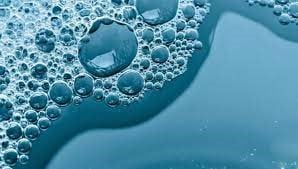How Defoamers Help Improve Performance in Coatings and Paints
How Defoamers Help Improve Performance in Coatings and Paints
Blog Article
How Defoamers Improve Performance in Production and Manufacturing

Understanding Defoamers
Defoamers play an essential duty in different making processes by properly combating the development of foam, which can disrupt operations and affect product quality. Foam can develop in numerous contexts, such as throughout mixing, home heating, or chain reactions, possibly bring about inefficiencies and variances in items. The mechanism whereby defoamers run generally entails reducing the surface stress of the fluid, permitting bubbles to rise and coalesce to the surface quicker, where they can after that burst.
Reliable defoamers not only minimize foam development yet additionally preserve compatibility with the product, guaranteeing that there are no damaging impacts on the last outcome. Understanding the residential or commercial properties and features of defoamers is necessary for producers intending to maximize their processes, enhance efficiency, and maintain the stability of their products (defoamers).
Key Benefits of Defoamers
Making use of defoamers in manufacturing procedures provides a variety of considerable benefits that improve functional efficiency and item top quality. One of the main benefits is the decrease of foam formation during manufacturing, which can obstruct machinery and interfere with process. By lessening foam, defoamers make sure smoother procedures, causing decreased downtime and maintenance costs.
Additionally, defoamers boost product uniformity by stopping air entrapment, which can compromise the stability of the end product. This is especially crucial in industries where visual appearance and texture are critical, such as in paints, layers, and food products. Boosted product top quality not only satisfies consumer expectations however additionally enhances brand name reputation.
Additionally, defoamers can help in enhancing resource usage. By improving the performance of basic material application, they add to cost savings and decreased waste, straightening with sustainability objectives. The application of defoamers can lead to much shorter processing times, allowing manufacturers to increase production ability without substantial funding financial investment.
Applications in Different Industries
In making processes across different sectors, the application of defoamers plays a crucial duty in boosting efficiency and item top quality. These chemical additives are utilized in sectors such as food and beverage, drugs, and fabrics to minimize foam-related difficulties.
In the food and drink industry, defoamers are vital throughout the fermentation process, stopping foaming that can disrupt production and spoil the product's integrity. Similarly, in the pharmaceutical market, defoamers are made use of in the formula of liquid medicines, making sure harmony and security while lessening waste.
Textile production additionally benefits from defoamers, as they are made use of in dyeing and completing processes to promote even distribution of dyes and chemicals. This application not only boosts the end product's appearance however additionally reduces the quantity of water and energy taken in throughout production.
Additionally, in the paper and pulp market, defoamers help maintain process efficiency by lowering foam that can prevent machinery efficiency. Overall, the diverse applications of defoamers across these industries emphasize their relevance in optimizing manufacturing procedures and supplying high-grade products.

Picking the Right Defoamer
Choosing an ideal defoamer is crucial for optimizing efficiency and high quality in producing procedures. The selection of defoamer relies on different elements, consisting of the details application, the sort of foam being produced, and the formula of the item being produced.

Firstly, think about the chemical compatibility of the defoamer with various other ingredients in your formulation. A defoamer that interacts adversely with various other components can negatively affect product quality. Additionally, the temperature and pH array throughout processing are crucial; some defoamers execute efficiently under navigate to this site certain problems while ending up being inefficient in others.
Second of all, review the defoamer's performance characteristics, such as its capacity to promptly reduce foam and its determination during manufacturing. It is important to choose a product that not only removes foam rapidly but likewise keeps its performance over time.
Finally, take into consideration environmental and governing factors, specifically if your manufacturing process goes through strict compliance standards. Picking a low-toxicity or biodegradable defoamer can assist fulfill sustainability objectives while guaranteeing operational performance. By attentively examining these standards, producers can make informed decisions that boost efficiency and product stability.
Finest Practices for Implementation
Successful implementation of defoamers in manufacturing processes calls for mindful preparation and adherence to best techniques. Choosing the best defoamer, as formerly reviewed, is vital; guarantee it is suitable with the products entailed and deals with the recognized frothing issues successfully.
Following, maintain why not try these out clear communication with all stakeholders, including drivers and top quality control groups. Training sessions can assist ensure that everyone comprehends the application procedures, prospective influence on item quality, and safety considerations. Carrying out a trial stage can additionally be helpful; display efficiency closely to gauge effectiveness and make necessary adjustments.
In addition, routine testing and surveillance of foam levels can give important understandings right into the defoamer's efficiency gradually. Readjusting does in response to changes in manufacturing variables will certainly help maintain ideal efficiency - defoamers. Ultimately, documenting all processes and results advertises continuous renovation, permitting fine-tuning of defoamer usage and improving overall performance in producing operations.
Conclusion
In summary, defoamers play a vital duty in enhancing effectiveness within production and manufacturing procedures. By minimizing foam development and helping with bubble Discover More Here coalescence, defoamers add to boosted product top quality, consistency, and operational performance.
The benefits expand to product top quality and expense savings, as defoamers help enhance processes.Defoamers play a vital role in numerous producing processes by efficiently combating the formation of foam, which can influence and interfere with operations product high quality. Recognizing the homes and features of defoamers is vital for producers intending to enhance their procedures, boost efficiency, and keep the integrity of their products.
Using defoamers in manufacturing procedures offers a variety of considerable advantages that improve operational efficiency and item high quality.Additionally, defoamers enhance item uniformity by stopping air entrapment, which can jeopardize the integrity of the last item.
Report this page